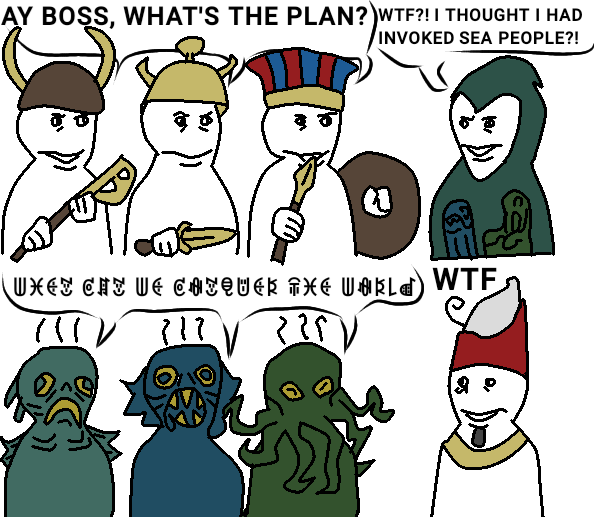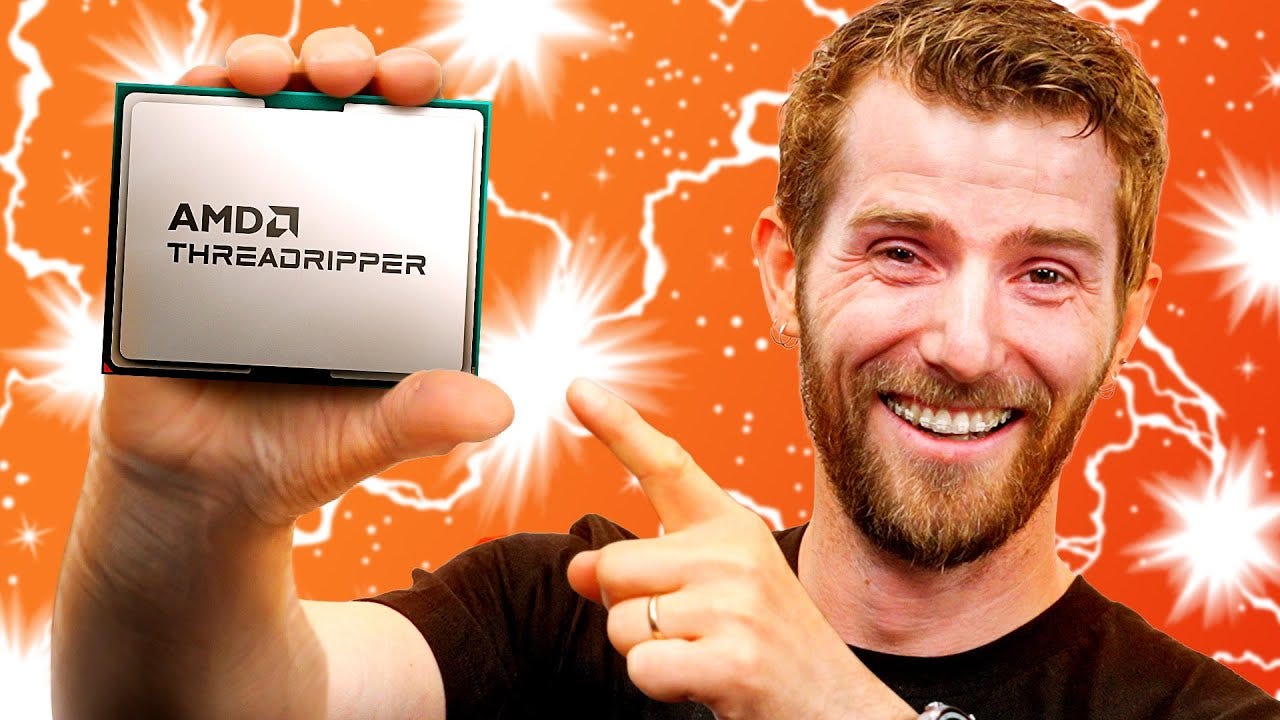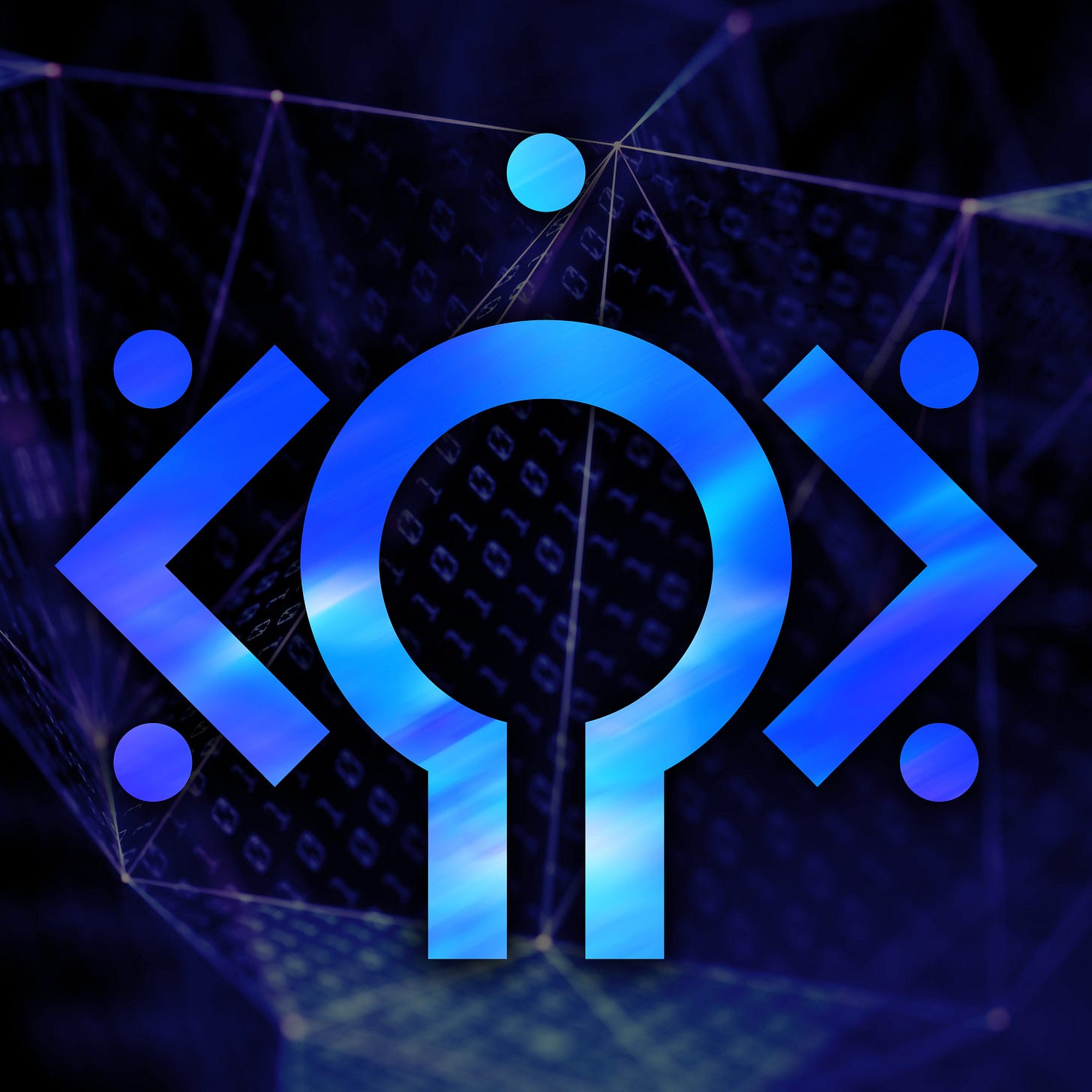Thriving on electronic garbage
What they call trash is not trash, and what they call treasure is not treasure.
I don’t know if you’ve noticed lately—I’m sure you have if you are a PC enthusiast or a techie—but something really stinks in the world of consumer electronics, and it’s not immediately clear who dealt it. Much like the reality of the Bronze Age collapse—contrary to our collective bias to scapegoat the Sea People—the culprit is Legion, and we must drive it into swine.
Consumers are aware, and are not happy about this. The seeds of popular discontent have already been sown:
But overall, you can tell if you have a nose for the price inflation suffocating everything lately. Building or purchasing a computer has quietly grown into a massive financial ordeal, and most of today’s mass media are out to lunch.
It’s not a good situation. And when you throw in the fact that video game performance has been getting marginally worse in recent years, it just all seems downright terrible, as if the gods have cursed us for our insolence!
We are staring down a lot of hard truths that no established player in the industry has a fix for:
Moore’s Law is dead and has been dead since 2013
Wealth stratification is ruining consumer-based economies worldwide
Software has no concept of fundamentals and is explosively bad
Industry vanguards are preoccupied doing racketeering and government corruption instead of looking to fund innovation like what you see here
One way or another—and who can possibly say how the dice may fall—there is a lot of punishment coming due because of duties neglected and obligations that went unfulfilled. Joyfully, today I get to talk about one of the many things I’m doing to fight that, and it will benefit you sooner than you may expect!
Purveyors of my weblog know that I have been developing a bespoke kind of ‘personal supercomputer’ project. The outline I published a few days ago talks about a big preamble project that’s required before I can start building the computer itself: a derivative of MS-DOS 6.22 called Sirius DOS. Beginning its life as a research operating system, it is destined to grow into a mature replacement for all other operating systems in the realm of business use, eventually becoming a product in its own right.
Sirius DOS needs to exist first because it will be the first software to employ mechanicalist engineering principles on off-the-shelf commodity hardware. The moment we articulate this is the moment we can discover how upside down the world of consumer electronics actually is; for the first time, we can observe something useful and make radical decisions on what our needs are and what kinds of products we can afford to cut out. Realising Sirius DOS means realising the benefits of completely folding on the existing status quo of consumer electronics, and we can do this because Sirius DOS has no need for such waste. Ironically, it is what we now call ‘e-waste’ that is newfound treasure in the employ of this new operating system.
But Sirius DOS isn’t meant to be a drop-in replacement for Linux or Windows. In fact, it’s going to be marginally limited in graphics acceleration capability because of the paradigm Bill Gates cursed us all into with dependency on highly coupled drivers; Sirius DOS isn’t going to be a priority for Nvidia or AMD to port their drivers to anytime soon, or ever really. That’s OK because it already settled on having a high-colour framebuffer that maxes out at 1280×1024, reduces down to high-colour at 640×480 and then to VGA according to hardware capabilities, and also leverages UEFI’s Graphics Output Protocol on computers that support it. As long as multiprocessing can be done indirectly—say, by architecting some simple remote job control with a commodity server running Linux—all is well and any workload can be tackled. Business work thrives, only at the cost of localised video game type direct rendering. One can even do scientific computing cost-effectively from the system if need be!
Whether you understood most of those technical details or not, you will know the impact when I tell you the consequence of it: virtually all computers made in the last two decades will become fully capable of running this system at its best. That means everything being sent to recycling centres right now is actually not useless! While Microsoft continues to try to con everybody into updating to Windows 11—which forces them into buying new CPUs and new motherboards that support the superfluous TPM 2.0 ‘security module’—Sirius DOS is doing the opposite, unlocking the potential of stuff people were going to throw away. Best of all, it’s hitting this problem even harder than Linux does.
Sirius DOS isn’t supposed to be a ‘modern’ operating system. It goes against its purpose to support things like multi-core CPU processing, and it really isn’t meant to provide many of the technical powers popularised by Windows 95 like pre-emptive multitasking and process memory isolation. You may be surprised how much you do not need those things to protect your code from itself with our new approach to development, but in any case, it’s a preamble project! Its ultimate purpose is to set the table for Anodyne proper by bootstrapping a sane development environment that doesn’t constantly shift under one’s feet like all the others do, all the while providing an architecture that matches Anodyne’s as closely as possible on commodity hardware. After serving its initial purpose of bootstrapping, it can morph into its own product to act as a gateway experience introducing the paradigm of Anodyne to people on hardware they already own (or salvaged at marginal cost), thereby driving sales for the personal supercomputers themselves.
In the mean time, Sirius DOS will endeavour to provide many of the things Anodyne itself will in the future: Network-centric peripheral device system (eschewing USB), SD based removable media (carrying on the spirit of floppy drives), vanishingly low idle power usage with remarkable energy efficiency observed in all workloads, networked declarative graphics rendering (hybridising X11 with OAM), software modular memory, a graphical widget toolkit ABI like 16-bit Windows, and a self-hosted software development kit (Byblos).
As I carry on into the remainder of 2025 and into 2026, development on this will continue. My work in finalising Hinterlib 2.0, though slow, is a big part of it, as Hinterlib will serve as its core library and eventually act as a replacement kernel for Microsoft’s.
The more that Sirius DOS’s capabilities increase, the more potential it has to free you from the clutches of mobbed up tech enshittification. It’s basically an operating system that will be too cheap to meter, because it will do everything it is capable of at maximum warp on a potato.





